Japan is a country known for its rich cultural heritage, stunning landscapes, and, of course, its diverse array of freshwater fish. From the majestic koi to the elusive ayu, Japan’s rivers, lakes, and ponds are teeming with life. In this blog, we’ll explore the fascinating world of freshwater fish in Japan, from their unique characteristics to their cultural significance.
Freshwater Fish Native to Japan
Here, we’ll talk about fish used for fishing, consumption, and ornamental purposes.
Since the types of freshwater fish that inhabit Hokkaido and the southern part of Amami are significantly different, we will focus on introducing freshwater fish from Honshu, Shikoku, and Kyushu here. Exotic species and species that are modified due to selective breeding are excluded.
- Freshwater Fish Native to Japan
- Koi / Carp
- Mabuna / Kinbuna (Japanese Silver Crucian Carp)
- Herabuna (Crucian Carp)
- Ugui (Big-Scaled Redfin / Japanese Dace)
- Marutaugui (Pacific Redfin)
- Oikawa (Fresh-water Sprat / Pale Chub)
- Kawamutsu (Dark Chub)
- Tanago (Tokyo Bitterling)
- Medaka (Japanese Rice Fish)
- Akame (Japanese Lates / Japanese Barramundi)
- Dojou (Loach)
- Taunagi (Asian Swamp Eel)
- Unagi (Eel)
- Namazu (Catfish)
- Biwako Oonamazu (Lake Biwa Catfish)
- Nigoi (Japanese Barbel)
- Sake (Chum Salmon / Used for all types of Salmon)
- Yamame (Yamame Trout)
- Iwana (Char)
- Amago (Biwa Trout)
- Ayu (Sweetfish)
- Kajika (Japanese Fluvial Sculpin / Japanese Bullhead)
- Yoshinobori
- Wakasagi (Smelt)
- Warning For Those Who Want to Fish in Japan
Koi / Carp
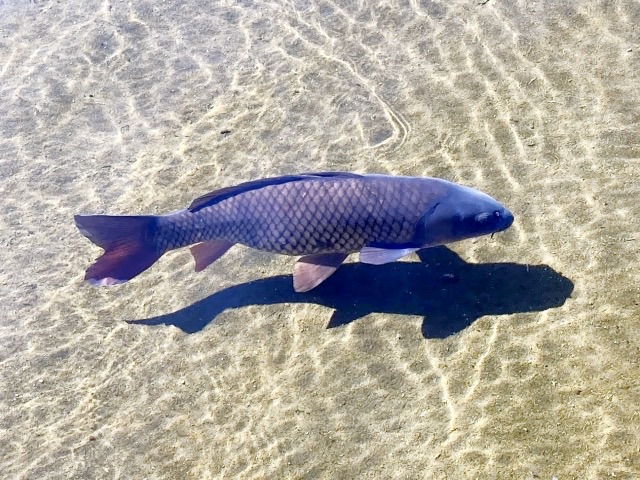

The representative freshwater fish of Japan. Its length is about 60cm. They are omnivorous and will eat anything they can fit into their mouths. They live everywhere, from large rivers to ponds, swamps, lakes, and rivers in towns. Usually ornamental, it can also be eaten.
Please see this article for the connection between Japanese culture and koi.
Mabuna / Kinbuna (Japanese Silver Crucian Carp)

Its length is approximately 30cm. They are omnivorous and eat any and everything they can fit into their mouths. Prefers muddy bottoms with slow currents, such as swamps, irrigation canals, and streams. A fish that children in rural areas can easily enjoy fishing for.
Herabuna (Crucian Carp)
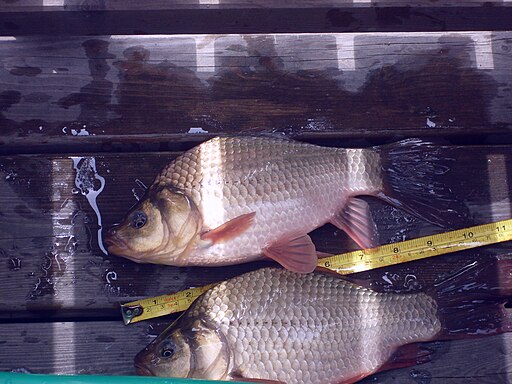
Native to Lake Biwa. It is also widely distributed in the Kanto region. Lives in ponds, swamps, and lakes. Its length is large, reaching nearly 60 cm. They eat algae and phytoplankton. It is quite difficult to catch, making it a target fish for fishing experts. Bamboo rods made using traditional methods are very expensive.
Ugui (Big-Scaled Redfin / Japanese Dace)

Large individuals grow to nearly 50 cm. Found in the middle reaches of rivers. It is edible in some regions. The descending type of dace is called the Marutaugui. It is omnivorous and likes to eat small fish and fish eggs. Many anglers target them by fly fishing.
The name comes from the fact that cormorants like to eat it (and sometimes have to regurgitate it for fishermen).
Marutaugui (Pacific Redfin)

It’s length is about 60cm. Because it has a stronger pull than the brackish water dace, it can be fished in rivers such as the Tama River from late March to mid-April. Not very edible. It is also a target fish for lure fishing such as spoons and spinners.
Oikawa (Fresh-water Sprat / Pale Chub)
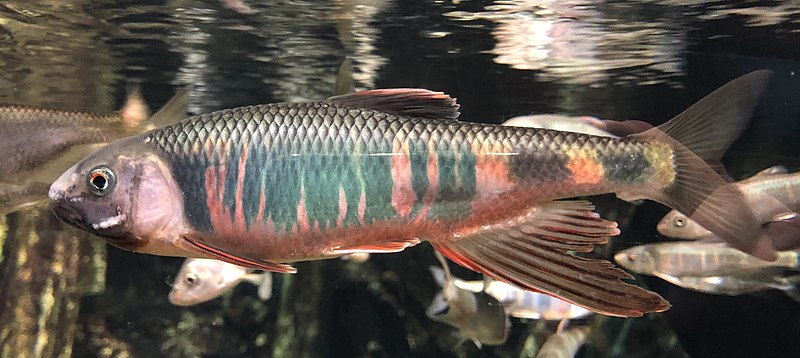
Body length is approximately 15cm. Oikawa in the wedding color is very beautiful. Lives in the middle reaches of rivers. eat insects and algae. You can also target it by fly fishing.
Kawamutsu (Dark Chub)
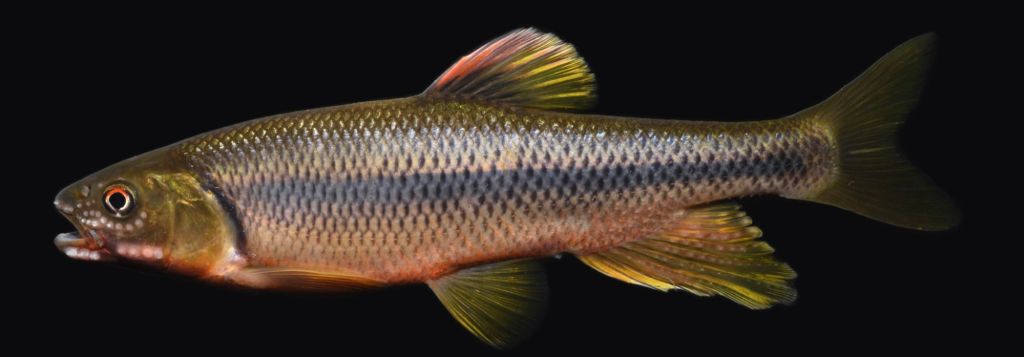
Its length is approximately 15cm. Lives in the middle reaches of rivers. Eats aquatic insects and algae. It gets mixed up when sweetfish from Lake Biwa are released to various locations, and has expanded its habitat to include the Kanto region.
The fish body is similar to Oikawa, but the color is more reddish. You can also target it by fly fishing.
Tanago (Tokyo Bitterling)


Average length is approximately 6-10cm. There are several types, but here we will use tanago. They live in irrigation canals and calm streams. The wedding colors are very beautiful as shown in the image above. They eat small insects and algae.
Medaka (Japanese Rice Fish)

Body length is approximately 3cm. Popular as pets. Lives in small streams. They eat mosquito larvae and algae. In some regions, it is eaten as tsukudani.
Akame (Japanese Lates / Japanese Barramundi)

Can grow to around 1m. Lives in brackish waters. Carnivorous. It is distributed only along the Pacific coast of western Japan facing the Kuroshio Current. Miyazaki prefecture and Kochi prefecture are famous. The name comes from the fact that its eyes glow red when you shine a light on them in the dark.
Dojou (Loach)

Is approximately 10cm long. It lives in irrigation canals in rice fields. There are various types, but we will explain them here as loaches. They eat mosquito larvae and earthworms. Rather than fishing, they are caught by scooping out the mud with a net. It is eaten in hot pot dishes. Live loaches are also sold at fish stores.

Taunagi (Asian Swamp Eel)

Can grow to about 40cm l ng. It eats small fish and aquatic insects. It prefers warm areas, so it is common in Kansai and westward. In Tokyo, it seems to live in Shakujii Park. It’s not a fish that you can easily catch. It is eaten in East Asia.
Unagi (Eel)
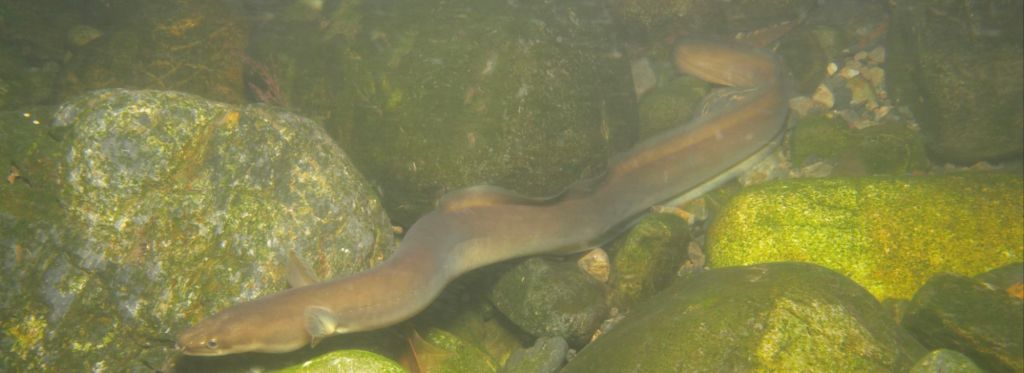
Average length of approximately 60cm. It inhabits a wide area from upstream to downstream of the river. Nocturnality. A super high-class fish in Japan. It eats brown earthworms, shrimp, sweetfish, etc.
Surprisingly easy to catch.
Namazu (Catfish)


Grows to about 60cm. They live in calm rivers, irrigation canals, and rice fields. Nocturnality. They are carnivorous and eat anything they can fit into their mouths. There is also a deep connection with earthquakes and Japanese culture. It is edible in some areas.
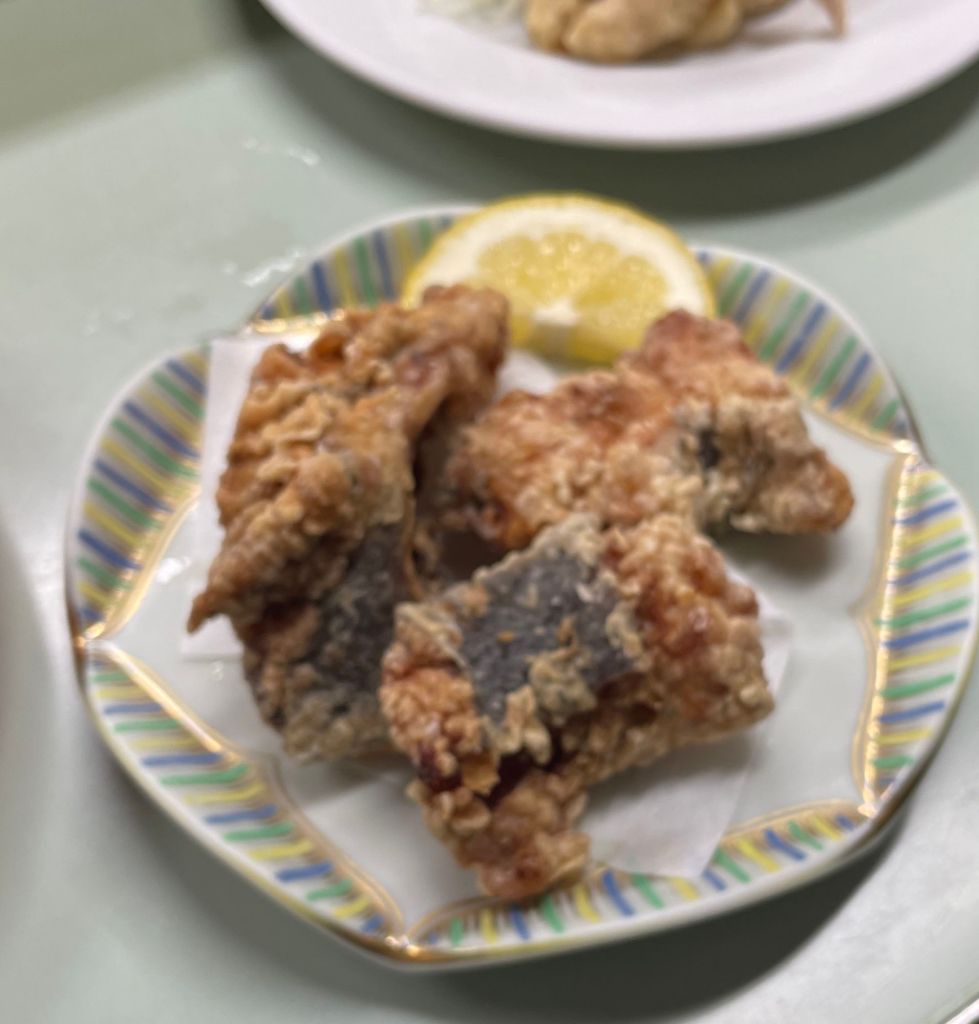
Please check this out for details about the catfish’s cultural connection to earthquakes.
Biwako Oonamazu (Lake Biwa Catfish)
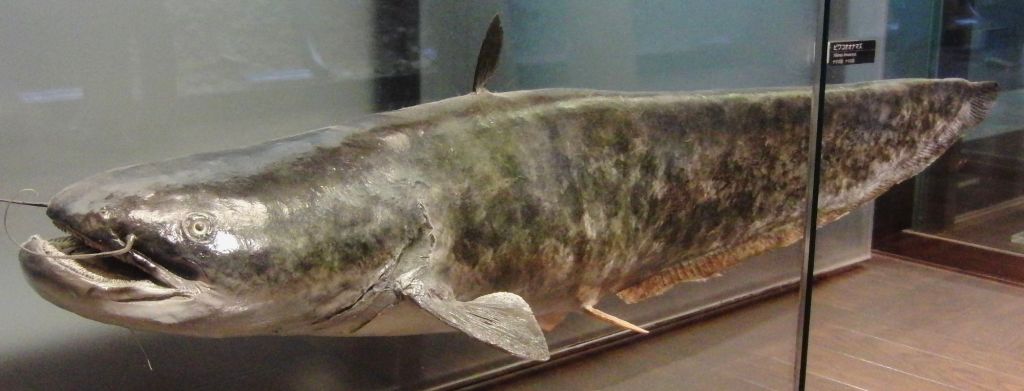
It can grow to over 1 meter. It lives in Lake Biwa and is the pinnacle of the Lake Biwa ecosystem. Nocturnality. They eat anything that they can fit into their mouths, not just fish.
Nigoi (Japanese Barbel)
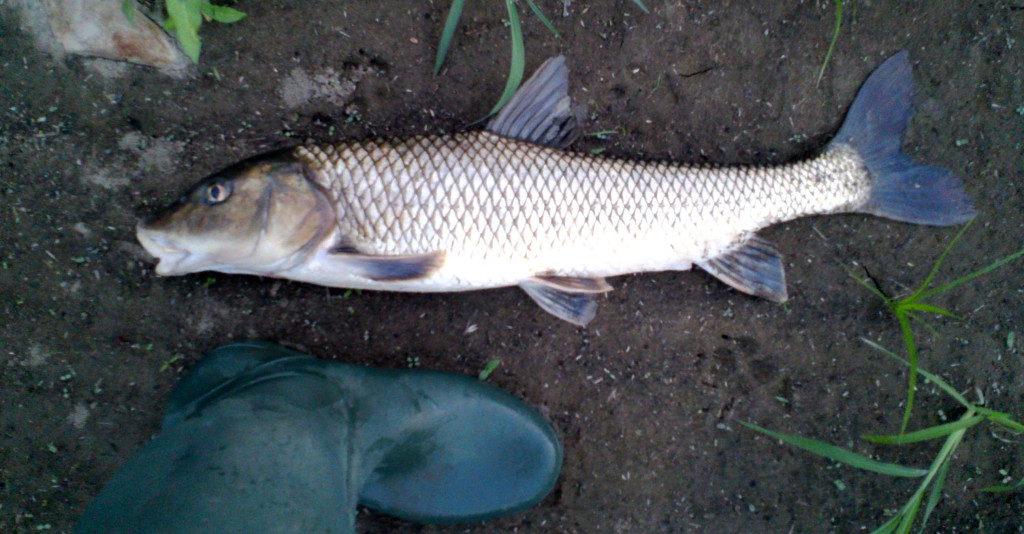
Body length approximately 40cm. They are omnivorous, but become more fish-eating as they grow larger.
They live in a wide range of freshwater areas, including the midstream and downstream of rivers, large and small lakes, and marshes.
Sake (Chum Salmon / Used for all types of Salmon)
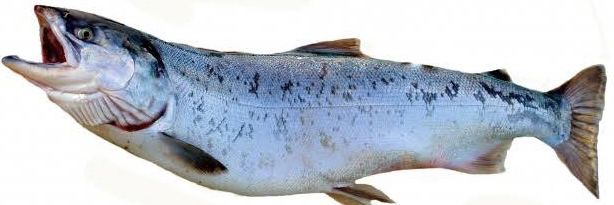
Quite large, with a length of about 80cm. Hokkaido is famous for them, but the southern limit is Chiba Prefecture on the Pacific Ocean side and Shimane Prefecture on the Sea of Japan side. They migrate upstream from the sea to rivers to spawn.
Yamame (Yamame Trout)
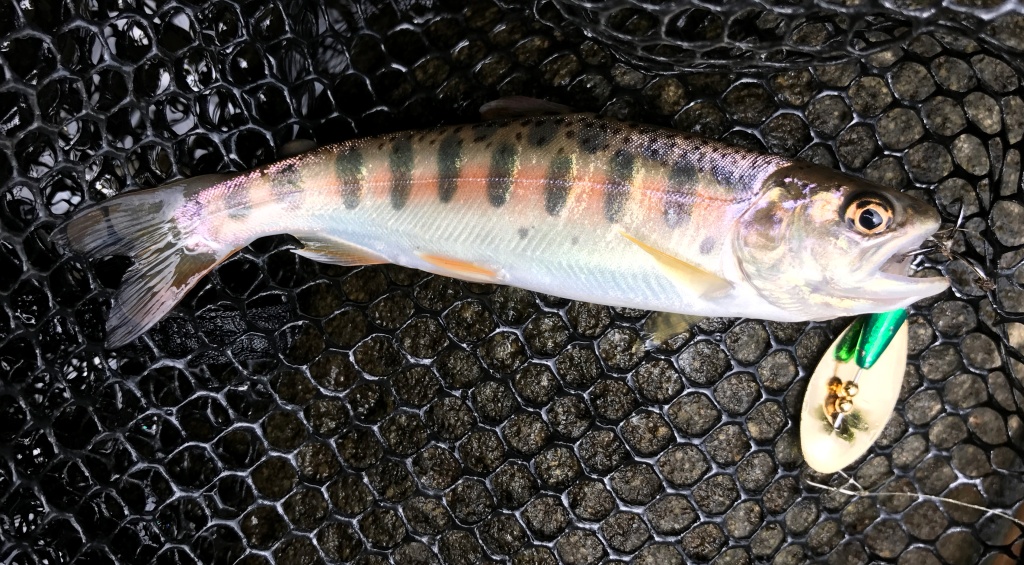
It’s length is about 40cm. Lives in the upper reaches of rivers. They eat river worms, etc. A fish that is very wary and suitable for fishing for advanced anglers.
Iwana (Char)

The length of large specimens is nearly 60 cm. It lives in mountain streams at the uppermost reaches of rivers deep in the mountains. They are very ferocious and sometimes even prey on snakes. They prefer cold water even more than Yamame trout.
There is something called char bone sake, which is made by boiling char that has been thoroughly grilled and dried over a long period of time, and even people who don’t like sake can enjoy it.
Amago (Biwa Trout)

It’s about 30cm long. Lives in the upper reaches of rivers. It looks similar to Yamame trout, but can be identified by its small red spots. They eat river worms, etc. A fish that is very wary and suitable for fishing for advanced anglers.
Ayu (Sweetfish)

Its length is approximately 25cm. It is very delicious among river fish. The adult fish is grilled, and the young fish have a slightly peculiar, bitter taste, but can be eaten with tempura. They migrate upstream to spawn and gather in the middle reaches in the summer.
Its young prefer animal food, and adults eat moss that has settled on rocks. Young fish can be easily caught using whitebait as bait. Adult fish are very territorial, and there is a type of friend fishing where you swim a sweetfish with a hook attached to it and catch the sweetfish that rams into you.
Kajika (Japanese Fluvial Sculpin / Japanese Bullhead)
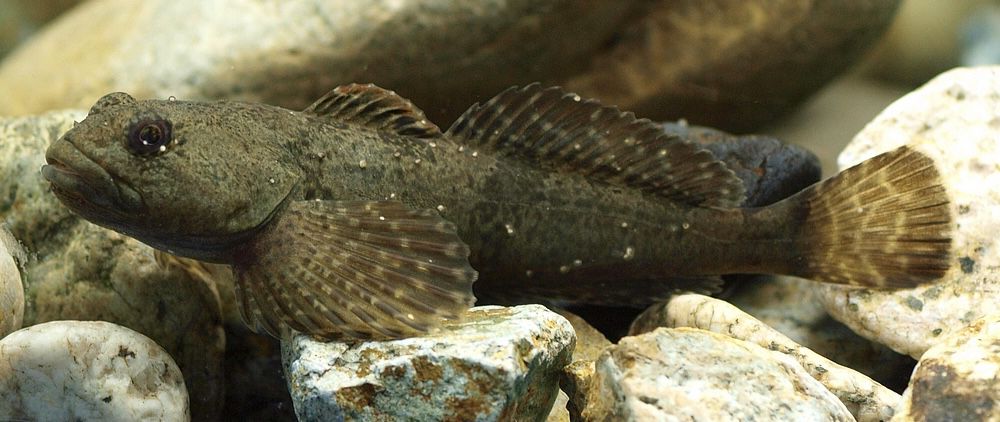
Body length of approximately 7cm. They live in mountain streams upstream of rivers and eat aquatic insects. They can be caught by dropping bait between stones and fishing, or by hole fishing. Kajika sake, which is made by adding grilled and dried Kajika to hot sake, is exceptional.
Yoshinobori

Body length approximately 5cm. They live in streams and ponds and feed on small aquatic insects. In captivity, they can be observed digging burrows under stones.
Wakasagi (Smelt)

Body length approximately 13cm. Famous for ice fishing. Even small children can catch a few fish, so it is also recommended for family leisure. The season is from late fall to early spring. Freshly caught Wakasagi make exquisite tempura and other kinds of fried dishes.
Please check this out for details about wakasagi fishing.
Warning For Those Who Want to Fish in Japan
Japan has very strict fishing rules.
Rivers have stricter rules than the sea, and fishing equipment other than fishing rods is often prohibited.
Closing seasons and fishing rights vary greatly depending on the region and river, and not only are they not announced in the first place, but it is extremely rare for them to be written in a foreign language.
Japanese people are very strict when it comes to violations of rules by ordinary people, and foreigners in particular can easily get into big trouble regardless of whether it is due to negligence or intent, so please be very careful.
In recent years, YouTubers who gain views by filming “foreigner crimes” have become a bit of popular content, so when fishing in an unfamiliar location, be sure to check with the facility in charge.
At Japan B we delve into rare insights and issues that are not commonly discussed with foreigners. Our blog offers a unique blend of rare cultural facts, living tips, politics, and social issues, along with valuable subsidy information and services to support your exploration. Stay connected with us to gain a deeper understanding of Japan’s rich heritage and make the most of your cultural experiences.
Photo Attriburtions
- Vassil, CC0, via Wikimedia Commons
- “Japanese silver crucian carp Carassius auratus langsdorfii” by is licensed under CC BY-SA 2.5
- jag asså, Public domain, via Wikimedia Commons
- Totti, CC BY-SA 4.0, via Wikimedia Commons
- “Pseudaspius brandtii maruta” by (Sakai and Amano, WEB魚図鑑 is licensed under CC BY-NC 4.0
- Totti, CC BY-SA 4.0, via Wikimedia Commons
- Ffish.asia, CC BY 4.0, via Wikimedia Commons
- Ffish.asia, CC BY-SA 4.0, via Wikimedia Commons
- Seotaro, CC BY-SA 3.0, via Wikimedia Commons (cropped)
- Σ64, CC BY 4.0, via Wikimedia Commons
- Manoel Jr., CC BY-SA 2.0, via Wikimedia Commons (cropped)
- Leo G. Nico, USGS, Gainesville, FL, Public domain, via Wikimedia Commons (rotated)
- Ffish.asia, CC BY 4.0, via Wikimedia Commons
- I, KENPEI, CC BY-SA 2.5, via Wikimedia Commons (cropped)
- Momotarou2012, CC BY-SA 3.0, via Wikimedia Commons
- Apple2000, CC BY-SA 3.0, via Wikimedia Commons
- 信州サーモン, CC BY-SA 4.0, via Wikimedia Commons
- Totti, CC BY-SA 4.0, via Wikimedia Commons
- I, KENPEI, CC BY-SA 3.0, via Wikimedia Commons
- yoppy from Kawasaki, Kanagawa, Japan, CC BY 2.0, via Wikimedia Commons
- opencage, CC BY-SA 3.0, via Wikimedia Commons (rotated)
- Seotaro, CC BY-SA 3.0, via Wikimedia Commons

hey
cool blog 🙂 will give it a follow and a like !
https://ketodietrecipes.co.uk/
LikeLike
Ayu is a fave!😍
LikeLike